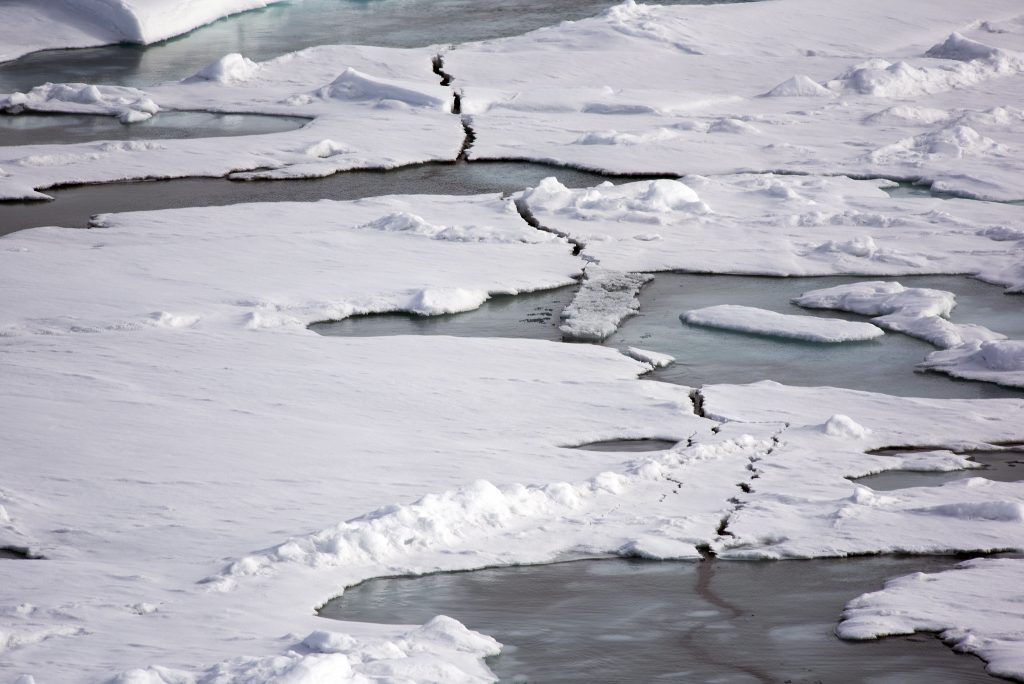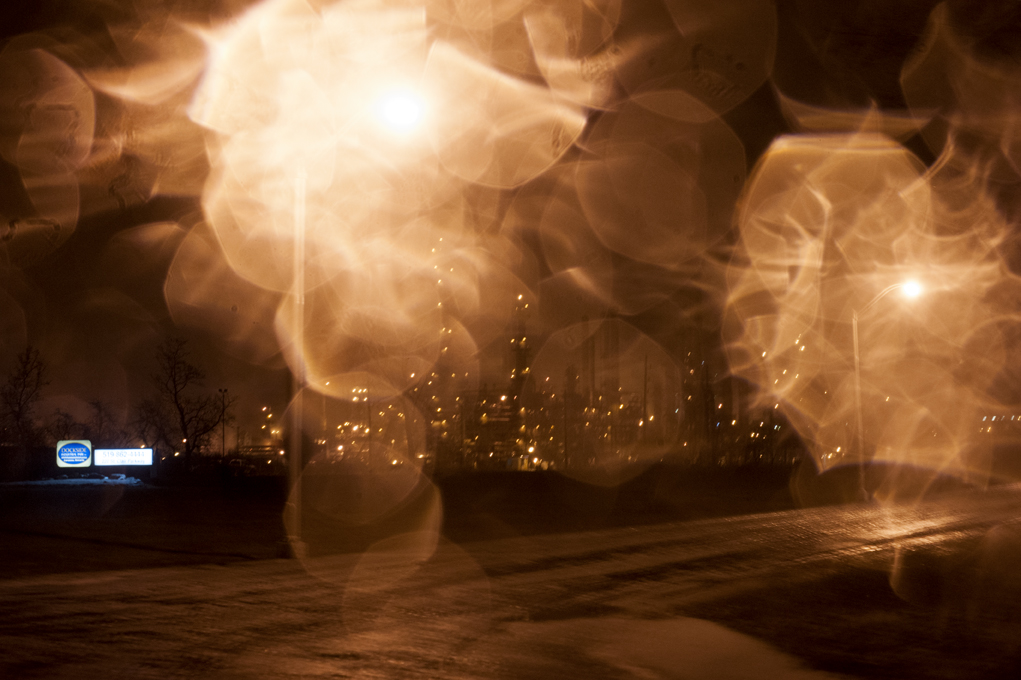By: Damanjot Kaur
Climate change is affecting the world in more than just environmental disasters, as it encroaches on people’s livelihoods and ways of living.
This is the case with the Inuit, who are losing their culture and way of life at a rapid pace due to the evolving rate of the environment and climate change. The Arctic is seeing the world shift at a much faster pace, as ice sheets are melting at a rate never recorded before.

Rigolet, Labrador. A community which has lived there for many generations and relies upon the ice trails to travel to neighboring communities. These ice trails have now become unreliable, as climate change continues to affect them, and becomes prone to thawing.
A climatologist in Happy Valley-Goose Bay, Robert Way, says that environment has become volatile and that the region suffers from extreme swings in weather. The winter is now six weeks shorter, and the region’s sea ice coverage is now one third of what it was a decade ago. All of these changes affect hunting patterns, and the times that allowed different sorts of animals to make their way across the terrain. By changing these patterns, the Inuit who rely on this generational knowledge are also struggling with the consequences. Weaker ice trails and severe shifts in weather make hunting dangerous. In this case, it can also cut off communities from others, causing them to isolate themselves, which in turn also cuts them off from their traditional hunting grounds.

Derrik Pottle, who has lived his entire life in the North in Rigolet, has seen these changes occur firsthand. The knowledge that has been passed down to him from older generations and the skills he has learned, he fears are on its way to becoming useless. The Inuit start to rely more so on store bought processed foods, rather than hunting, because it is safer. It becomes harder to travel to hunt when the severe shifts in weather are not as they used to be and older knowledge cannot account to the damage that climate change has brought onto the weather. However, the reliance on store bought foods is at once necessary but also foreign to the Inuit way of life and diet. Their bodies are not used to such foods that contain greater amounts of sodium and fat. The rapid changes in their food systems are due in large part to globalization and global warming, and which can lead to malnutrition and the loss of Indigenous knowledge.
Traditions, such as hunting and providing meat to community freezers for those who cannot hunt, is also in danger as hunting becomes scarcer and then so does retaining those skills. As living off of the land is so important to Inuit communities and their identity, the loss of hunting then is significant. One Inuit woman says, “that not being able to get on the land has made her feel like her spirit is dying”. Another man talks about the ice in relation to the Inuit and says, “Inuit are people of the sea ice. If there is no sea ice how can we be people of the sea ice”. Ashley Cunsolo discusses these feelings of loss within her research at the Labrador Institute in Happy Valley-Goose Bay, by linking mental health and climate change together. She discusses the impacts that it has on communities who are slowly losing that knowledge, and how it has then led to higher drug and alcohol abuse patterns. The feelings of loss to traditional ways is devastating especially when it links to the greater mental health of many communities.
Mental health is also dependent on being able to eat local food, because of the importance in Inuit conceptions that are tied to self and the environment. This is also described as being ‘ecocentric’, which is the sense that the food becomes you. In Western sayings, it is similar to the saying of ‘you are what you eat’, which describes how much of their identity is tied to the food that they hunt and eat. Thus, hunting is not merely a necessity, rather it is part of a larger structure that supports social life.
The implications of this loss are heavier as greater changes to climate change will cease to support Inuit way of life. Traditional Inuit languages such as Inuktitut are in danger of disappearing too, as more children cease to identify it as their primary language. From 1996 to 2011 the number of families in Nunavut households declined from 76% to 61%, at this rate it is predicted that the number of speakers will dwindle to a mere 4% by 2051. Within children, the loss of language is even more so prevalent, as only 66% of Inuit youth under the age of 15 saw Inuktitut as their primary language at home, compared to 97% of elders over the age of 65.
Inuktitut is important to preserve as it has developed over thousands of years and contains nuances and environmental observations that the English language cannot capture. Language and culture are linked in more ways than one, and the loss of one, will affect the other just as strongly. As the Inuit lose more of their traditions due to climate change, the language is also in danger of dying out.
Language is important as it is wrapped within cultural and historical meanings, and so the “loss of language is a loss of that link to the past”. People in a culture lose a sense of place, and purpose. Losing a language is losing one’s identity in the process which uproots entire communities.
However, even with the many changes that climate change is bringing forth, Inuit communities are learning to adapt to these new changes. Many communities are responding by where and when they hunt, compared to their original hunting patterns. For example, the Wainwright community on the North-West coast of Alaska have completely changed the way they hunt bowhead whales because of the instability of the ice. Normally, hunting for whales commences in the spring when they can walk on the ice, but as the ice has become thinner and the whales have changed their migration patterns, hunting now begins in the fall which requires different gear and different technologies.
There are even government programs that seek to revive the Inuktitut language and increase its usage in schools to prevent the loss of it, and while things are not perfect, these communities have also learned to adapt and change with the world around them.
This issue is not only affecting Inuit communities, but rather Indigenous communities all over the world, who are losing their land and their communities because of colonization, and climate change. It’s time to change how we think about climate change and frame the harm that it has caused on a larger scale instead of an individual level. The aim then would be to link these harms to broader structures and “understand the interconnectedness of body, Land, and structures of power”. As our world changes so must we.
Works Cited
Albeck-ripka, Livia. “Why Lost Ice Means Lost Hope for an Inuit Village.” The New York Times, The New York Times, 25 Nov. 2017.
Blair, Haley. “Revitalization of Inuktitut: Using Government Funding to Implement Technology to Strengthen an Endangered Language.” The Henry M. Jackson School of International Studies, University of Washington, 25 June 2019.
Ford, James D, et al. “Adapting to the Effects of Climate Change on Inuit Health.” American Journal of Public Health, American Public Health Association, June 2014.
del Bello , Lou. “Globalisation and Global Warming Threaten Inuit Food Security.” Rethink, 12 October 2017.
Mercer, Greg. “’Sea, Ice, Snow … It’s All Changing’: Inuit Struggle with Warming World.” The Guardian, Guardian News and Media, 30 May 2018.
Shadaan, Reena, and Michelle Murphy. “EDC’s as Industrial Chemicals and Settler Colonial Structures:” Catalyst, Vol. 5, No. 1 (2020).
Wallace, Lane. “What’s Lost When A Language Dies.” The Atlantic, Atlantic Media Company, 10 Nov. 2009.
